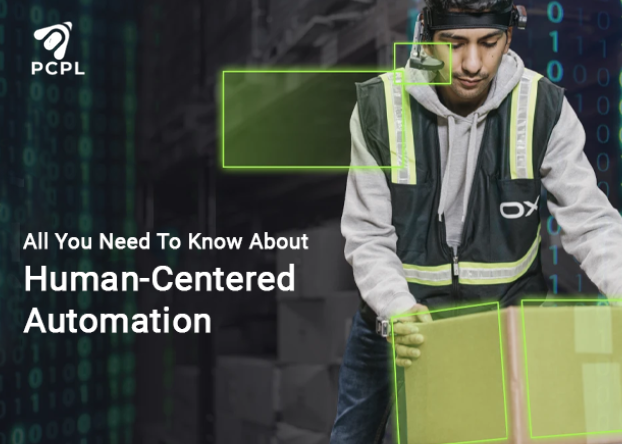
All You Need To Know About Human-Centered Automation
Technology, intended to simplify human existence, will always require human interaction. This principle also applies to artificial intelligence (AI) and the future of work. Maximizing AI’s potential relies on strategically dividing labor between humans and AI. Therefore, a human-centered approach to AI design is important.
We can create systems that empower, rather than impede, us by thoughtfully incorporating human input and perspectives into the design, development, and deployment of AI. This approach allows AI to effectively address the needs and well-being of everyone, whether they are employees, customers, or individuals in broader contexts.
The History Of Automation
Automation is a long-standing human venture. Throughout history, we’ve developed technologies to enhance our work and optimize our time. From the wheel (Mesopotamia, 3500 BC) and the movable type printing press (likely China, c. 1000 AD) to the mechanized automobile assembly line (Ford, 1946), we’ve consistently used automation to simplify, improve efficiency, and better organize our work.
In recent years, automation has become more sophisticated and accelerated dramatically. The microchip, personal computer, and cell phone have enabled automation of tasks, workflows, and processes in previously unimaginable ways. Automation has become so commonplace that we rarely question its purpose.
What Does Human-Centered AI Mean?
Human-centered AI prioritizes the human experience in the design and implementation of AI technologies, like generative AI. It goes beyond simply focusing on the gains of AI implementation and places human needs at the core of creating ethical, inclusive, and accountable AI systems.
This ensures AI benefits everyone, not just those with specialized technical expertise, and that its impact is positive and improves experiences for all.

In intelligent automation (IA), a human-centered approach means improving end-to-end business processes by designing automation that complements and enhances human work. The goal is to augment human capabilities in a supportive and natural way, empowering people to accomplish tasks more effectively.
The Need For Human-Centered AI
Human-centered AI aims to maximize AI’s benefits for improved work and outcomes for all. The central challenge lies in balancing human input with AI’s capabilities, often achieved through human-in-the-loop systems or human-focused AI design.
This approach is important for the following reasons
- Enhanced Usability– Prioritizing user experience makes AI more intuitive and accessible, maximizing its effectiveness.
- Personalization and Adoption– Adapting to diverse needs and preferences allows for personalized interactions and support, ensuring AI solutions evolve with changing requirements and facilitating user interaction, building, and operation in a way that best suits them.
- Trust Building– Transparency and human oversight boost confidence in AI systems, driving adoption.
- Increased Safety– Human-centered design minimizes risks and prevents harm, ensuring responsible and safe AI deployment without unintended negative consequences.
- Ethical Considerations– Addressing privacy, security, and societal impact during design and implementation ensures responsible AI usage aligned with ethical standards.
Examples Of Human-Centered AI
Human-centered AI prioritizes human control and ensures AI serves our needs, often through processes where humans have final sign-off or are involved throughout.
- Faster Customer Response– ABANCA uses IA and generative AI to respond to customer inquiries 60% faster. Digital workers handle initial tasks like document validation and data extraction, then route requests to human agents based on complexity. This boosts efficiency, productivity, and revenue by freeing employees for higher-value tasks.
- Cooperative Teamwork– At Danica Pension, 30% of staff are digital, and 80% of human staff have experience working with digital colleagues. With upcoming generative AI and machine learning capabilities, these digital workers will gain access to broader data, enabling deeper customer understanding. This allows human employees to focus on personalized customer interactions (“warm hands”), resulting in a high NPS score (+70). Danica Pension plans to expand its “powered by AI” program.
Business Benefits Of Human-centered AI
Human-centered AI offers several business advantages by combining the strengths of AI and human capabilities for creative, efficient, and value-driven results. Designing AI with humans and automation in mind yields the following benefits-
- Employee Satisfaction– AI empowers employees by handling not just manual tasks, but also complex ones, adapting to new information, and continuously improving. This frees employees to focus on higher-value work and opens up new opportunities.
- Enhanced Customer Experience– Happier employees, empowered by AI, are more engaged and focused on delivering excellent customer service, creating a positive feedback loop.
- Improved Performance– User-friendly interfaces enable easier interaction with AI, allowing humans to effectively guide AI agents (digital colleagues) to achieve desired outcomes. Natural language understanding simplifies instructions, eliminating the need for complex coding or AI expertise.
- Better Decision-Making- AI provides data-driven recommendations aligned with human needs, enabling more informed and strategic choices.
- Reliability and Scalability– AI’s continuous learning improves reliability, handles complex tasks, and integrates seamlessly for scalable deployment across departments, teams, or regions.
- Greater Accuracy and Consistency– Advanced AI understands context, helping humans make more accurate and consistent decisions aligned with business objectives.
- Boosted Innovation– AI and humans learn, adapt, and improve together, driving innovation. Humans gain time for creative problem-solving and strategic initiatives, supported by AI.
- Governance and Security– Human-centered AI incorporates human-in-the-loop capabilities, ensuring human oversight for critical decisions, even when AI provides recommendations and insights, thereby maintaining enterprise-grade governance.
The Dual Power Of AI Plus Humans
The future of business and innovation isn’t about AI versus humans, but rather AI plus humans. The true power lies in their synergy. By collaborating, AI can augment human abilities, boosting decision-making, efficiency, and creativity beyond what either could achieve independently. This partnership is transformative, empowering individuals to accomplish more with the same resources.
The key is designing human-centered AI solutions. Focusing on human needs, values, and strengths allows us to create AI systems that truly complement and enhance human capabilities.
Further, AI fuels human creativity. Innovation often arises from insights, and technologies like AI and automation are important for generating those insights. Creativity flourishes when ideas are shared and built upon, and technology facilitates this through idea gathering, collection, and sharing. Once unlocked, this creativity needs efficient implementation, requiring technology partners like PCPL to bring ideas to life faster, better, and smarter.
The Future
We envision a future where AI powers intelligent organizations, where processes are not only automated but also continuously learn, adapt, and improve. In this future, your team is free to concentrate on what truly matters.
As AI evolves, prioritizing human-centered design is essential to maximize its benefits and mitigate potential risks.
To discover how to integrate human-centered AI into your organization, explore our services at PCPL.
References
https://www.pipefy.com/blog/future-of-work-human-centric-automation/

